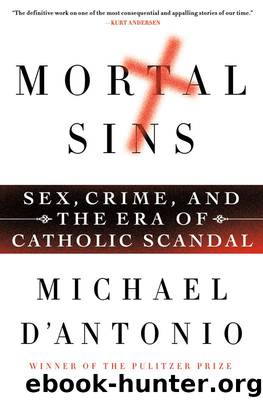Mortal Sins: Sex, Crime, and the Era of Catholic Scandal by D'Antonio Michael

Author:D'Antonio, Michael [D'Antonio, Michael]
Language: eng
Format: epub, mobi
Publisher: St. Martin's Press
Published: 2013-04-09T00:00:00+00:00
16. “WOULD A BISHOP LIE?”
More than 125,000 people turned out to shiver and cheer and cry and laugh when John Paul II said Mass in Central Park on a cold October Saturday in 1995. Dressed in gold vestments and beaming a crinkly smile, the seventy-five-year-old pontiff sent ripples of emotion through the crowd with every word and gesture. Even the trembling of his hand was greeted as something warm and familiar. He was loved as a grandfatherly figure, although the great majority of American Catholics said that his views had little bearing on their personal morality.
The disconnect between acceptance of the man and his ideas had much to do with the content of those ideas. Throughout his papacy John Paul II had pushed an aggressively traditional Catholic morality and a dim view of the modern society, especially American society. More recently he had talked about “a culture of death” represented by the United States and a “culture of life” offered by the Church. In 1995, during a five-day tour of America, he linked abortion rights to violence of all kinds and implored crowds to “Stand up for marriage and family life.”
In a diverse, pluralistic nation moving toward gay rights and gay marriage, the Pope’s pronouncements sounded like a call from a distant and less tolerant time. However, his personal popularity was unrivaled. In New York, as elsewhere, he electrified crowds and outshone every luminary who stood near him. His appeal was subjected to regular analyses, which invariably concluded that as a former stage actor, John Paul II wore his office better than any man in modern times. His charisma invited people to project their fondest sentiments upon him, and his personal triumphs over assassination attempts and many illnesses made him a symbol of fortitude and courage. No matter what they thought about his message, people liked the man.
The ultimate weapon in the Vatican’s public relations arsenal, a papal visit could highlight his views, announce the opening of a new dialogue, or punctuate the end of one. After John Paul II’s tour of America, Cardinal Joseph Ratzinger made sure that everyone understood the Pope was determined to close debate with liberal-leaning Catholics. In a public letter he invoked the power assumed by Pius IX when his troops were in retreat and announced that John Paul II’s opposition to ordination for women was “infallible” doctrine that must be accepted by the faithful. Those who were disturbed by this news were encouraged to ask the Holy Spirit for help in accepting that while women would never gain the special status accorded men, they were nevertheless equal.
In early 1995 an historian of religion at Pennsylvania State University surveyed the Catholic landscape and declared that the abuse crisis had “reached its height in 1992–93” and was receding. Philip Jenkins wrote that well-meaning but misguided Catholic “culprits” like Richard Sipe, Jason Berry, and Andrew Greeley had contributed to “the often outrageous exaggeration” of the problem because they truly believed their Church needed reforming. However, thanks to
Download
Mortal Sins: Sex, Crime, and the Era of Catholic Scandal by D'Antonio Michael.mobi
This site does not store any files on its server. We only index and link to content provided by other sites. Please contact the content providers to delete copyright contents if any and email us, we'll remove relevant links or contents immediately.
Mindhunter: Inside the FBI's Elite Serial Crime Unit by John E. Douglas & Mark Olshaker(9112)
Wiseguy by Nicholas Pileggi(5617)
Hitman by Howie Carr(4984)
Room 212 by Kate Stewart(4968)
Secrecy World by Jake Bernstein(4599)
Killers of the Flower Moon: The Osage Murders and the Birth of the FBI by David Grann(4353)
Papillon (English) by Henri Charrière(4152)
Breaking Free by Rachel Jeffs(4121)
Killers of the Flower Moon by David Grann(3907)
Say Nothing by Patrick Radden Keefe(3850)
American Kingpin by Nick Bilton(3719)
The Secret Barrister by The Secret Barrister(3566)
Molly's Game: From Hollywood's Elite to Wall Street's Billionaire Boys Club, My High-Stakes Adventure in the World of Underground Poker by Molly Bloom(3448)
Mysteries by Colin Wilson(3368)
In Cold Blood by Truman Capote(3274)
Signature in the Cell: DNA and the Evidence for Intelligent Design by Stephen C. Meyer(3002)
I'll Be Gone in the Dark by Michelle McNamara(2991)
Rogue Trader by Leeson Nick(2950)
Bunk by Kevin Young(2905)
